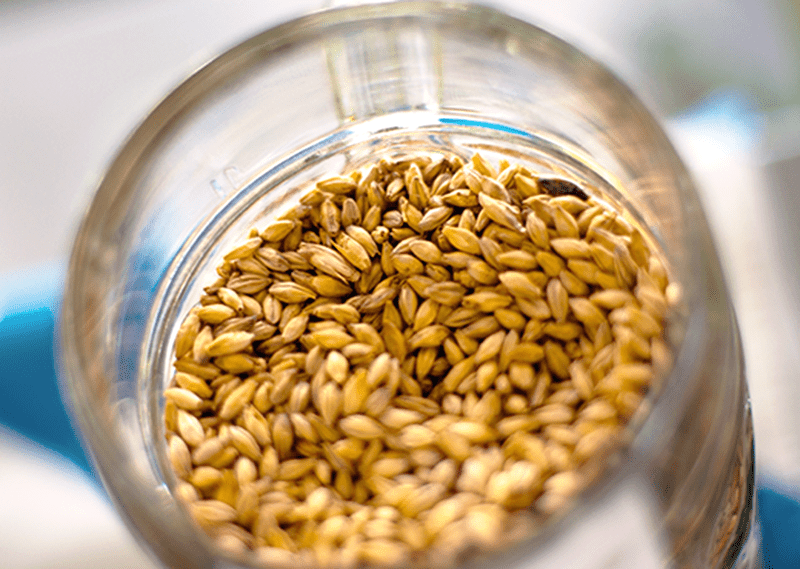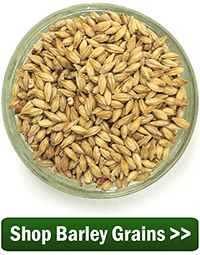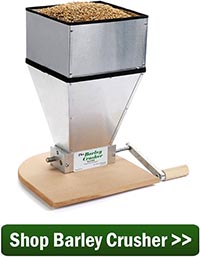 We recently covered a number of popular base malts, which form the majority, or foundation, of a given all-grain beer recipe. Most homebrew recipes will incorporate a small to moderate amount of specialty malts to give the beer additional character, color, and flavor. Every specialty malt has its own unique characteristics that it adds to a beer, which may be used alone or combined with other specialty malts to create a certain malt profile.
We recently covered a number of popular base malts, which form the majority, or foundation, of a given all-grain beer recipe. Most homebrew recipes will incorporate a small to moderate amount of specialty malts to give the beer additional character, color, and flavor. Every specialty malt has its own unique characteristics that it adds to a beer, which may be used alone or combined with other specialty malts to create a certain malt profile.
So what are some of the most popular specialty malts used in beer? Here’s a rundown of the descriptions of the different types of specialty malts you might use for partial-mash or all-grain brewing.
Most specialty malts are made from barley grain, but these first two are made from wheat and rye.
- Wheat malt – Wheat malt is an adjunct grain that provides bready wheat flavor, body, head stability, and diastatic power, with little impact on color. A little may be added to ales and lagers, or a larger portion may be the backbone of a German weizen. If using a substantial amount of wheat, rice hulls are recommended to prevent a stuck mash.
- Rye malt – Rye malt can be used in many of the same ways as wheat malt, but provides a distinctly different flavor, often described as spicy. Think of the flavor difference between wheat bread and rye bread. Rye also contributes body, and sometimes a mouthfeel described as oily or slick. Most rye pale ales will only use about 10-20% rye malt, while a German roggenbier may use as much as 100%.
All of the descriptions below are for the different types of specialty malts used in beer that are made from barley grain:
- Carapils® malt – Carapils®, or dextrin malt, is a very lightly colored malt used to increase body and head retention without affecting color. This is accomplished due to the higher level of unfermentable dextrins in this malt. Generally only 5% or less is used in a grain bill.

- Munich malt– Munich malt can be used as either a base malt or a specialty malt. It is commonly added in smaller amount (1-2 lbs.) to add a malty or bready depth of flavor to the grain bill, though beers may be made with up to 100% Munich malt. Munich malt contains enough diastatic power to self-convert.
- Aromatic malt – Aromatic malt is a Belgian-style Munch malt contributing, rich, sweet, toasted, and malty flavors to a beer. Commonly used in brown ales and darker Belgian styles such as dubbels.
- Victory® malt – Victory® malt is a trademarked specialty malt made by Briess. As a lightly roasted malt, it has a nutty, biscuit-flavor characteristic. A small amount (~5%) may add a slight biscuit flavor to a lighter ale or lager. Use more in a darker beer to bring out those same flavors. No diastatic power.
- Special B – Special B is another darker Belgian-style malt. At 118˚L, it is only appropriate for use in darker beer styles. For example, a pound in a Belgian dubbel or barleywine will contribute strong flavors of raisin or toffee.
- Caramel malt – Of all the different types of specialty malts, this category is the broadest. A wide range of caramel and crystal malts provide color, body, and flavor to a number of beer styles. They’re rated by color, from 10 to 120 degrees Lovibond. At the lower end of the spectrum, they may offer flavors of caramel, biscuit, or honey. Sweet malt flavors become more rich into the 60 to 80 range. Caramel 90 and 120 offer darker color and flavors of raisins, dates, and burnt sugar. All caramel malts will contribute some unfermentable dextrins to your beer, increasing body and head retention.
- Carafa malt – This type of specialty malt is a very dark, de-bittered roasted malt. Use it when aiming for a beer with color, but no astringent, roasted bitterness. Commonly used in swarzbier, dunkel, and black IPA, but also works in less roasty stouts and porters. Very dark at 500˚L.

- Chocolate malt – A dark roasted malt offering chocolate flavor. A pound is plenty in a five-gallon porter or stout, though as much as two pounds may be used. A very small amount can be used to adjust color in amber or red ales.
- Black patent – A very dark, very bitter specialty malt. Too much may make your beer taste burnt. Generally, 1-4 oz. of black patent in a stout will contribute plenty of dark roasted flavor and color.
This is just a brief list of the more common different types of specialty malts along with a description of their basic characteristics. There are many other specialty grains available that can used in beer as well. What are some of your favorite specialty malts?
—–
David Ackley is a beer writer, brewer, and self-described “craft beer crusader.” He holds a General Certificate in Brewing from the Institute of Brewing and Distilling and is founder and editor of the Local Beer Blog.
